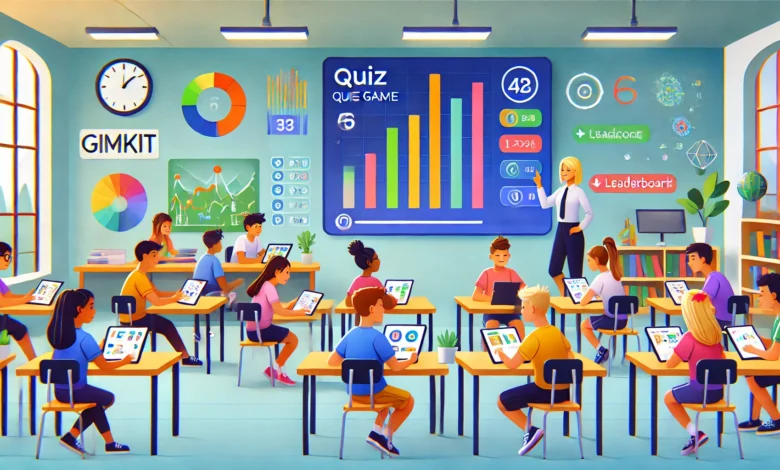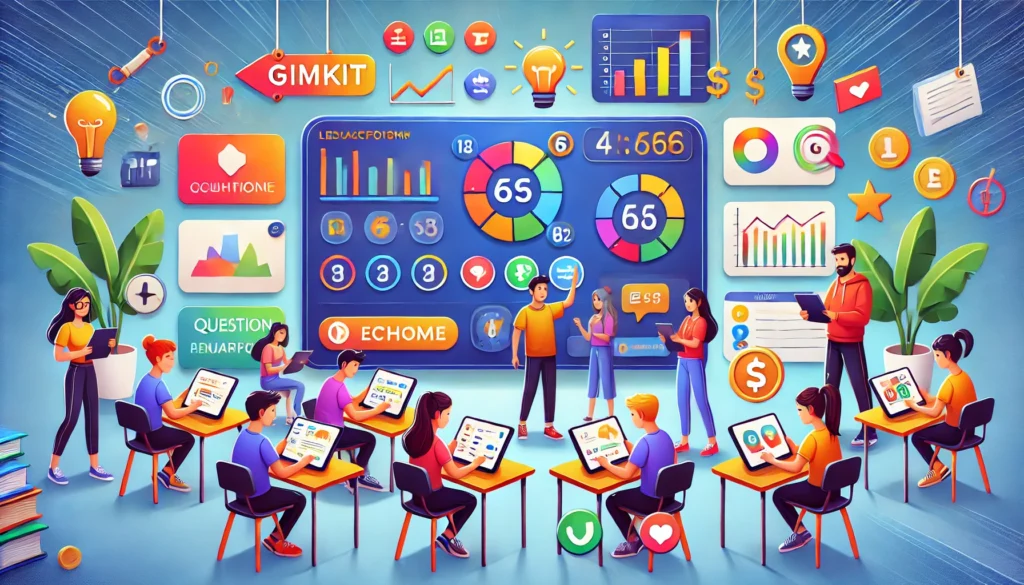Ultimate Guide to Gimkit The Interactive Learning Game Platform

Introduction to Gimkit
In today’s digital age, technology is pivotal in revolutionizing education. Platforms like Gimkit have emerged as powerful tools for educators seeking innovative ways to engage students in learning. Gimkit is an interactive, game-based learning platform that allows teachers to create quizzes while students participate in competitive or collaborative games to answer questions and earn rewards. Developed by a high school student, Gimkit combines gamification elements with academic content, making learning fun and effective.
What sets Gimkit apart from other educational platforms is its emphasis on engagement and strategy. Unlike traditional quizzes, Gimkit allows students to earn virtual currency based on their performance, which they can reinvest to boost their scores. This creates an element of strategy, as students must balance risk and reward to succeed. Gimkit offers educators a streamlined way to track progress, identify knowledge gaps, and adjust teaching methods accordingly.
The evolution of gamified learning tools like Gimkit reflects the broader trend of integrating technology into classrooms. As students become more tech-savvy, platforms like Gimkit offer a seamless bridge between entertainment and education. Teachers increasingly recognize the platform’s potential for improving retention, engagement, and participation. Whether used in a traditional classroom or a virtual learning environment, Gimkit is changing how students interact with educational content.
How Gimkit Works: Features and Functionality

Gimkit is designed with both teachers and students in mind, offering intuitive features that simplify the process of quiz creation, classroom management, and student participation. The first step for educators is to create a Gimkit account and build custom quizzes. Teachers can add questions manually or import them from existing resources. The platform supports multiple-choice questions, accurate/false options, and image-based queries, allowing versatility across different subjects.
One of Gimkit’s standout features is its game modes. Teachers can choose between Classic Mode, where students compete individually, or Team Mode, where students collaborate in groups to earn points. Live games are especially popular for creating excitement and fostering friendly competition. In addition, Gimkit offers an Assignment Mode where students can complete quizzes asynchronously, making it ideal for homework or remote learning.
The platform also integrates seamlessly with popular tools like Google Classroom, simplifying the process of importing student rosters and assigning quizzes. Teachers gain access to real-time data and analytics, which provide insights into individual and group performance. This data-driven approach enables educators to identify areas where students may be struggling and adapt their teaching strategies accordingly.
For students, Gimkit’s most engaging aspect is its in-game economy. Correct answers earn virtual currency, which can be spent on power-ups or strategic boosts. This gamified approach transforms quizzes from mundane tasks into thrilling challenges. By blending strategy with academics, Gimkit keeps students motivated, focused, and eager to improve.
Benefits of Using Gimkit in Education
One of the most significant advantages of using Gimkit in the classroom is its ability to enhance student engagement. Traditional teaching methods often struggle to hold students’ attention, but Gimkit turns lessons into interactive experiences. Incorporating competitive and strategic elements, Gimkit motivates students to participate actively in their learning journey.
Another key benefit is the platform’s flexibility. Gimkit is not limited to a single subject or age group. Whether math, science, history, or language arts, teachers can create quizzes tailored to their specific curriculum. Gimkit’s diverse game modes allow educators to adapt the platform to fit different learning scenarios, from team-based challenges to solo assignments.
Gimkit also provides valuable performance analytics. Teachers can easily monitor student progress, identify knowledge gaps, and address individual learning needs. This data-driven approach ensures that no student is left behind and that instructional time is spent effectively.
Lastly, Gimkit promotes critical thinking and decision-making skills. The in-game economy requires students to make strategic choices about spending their virtual currency. Should they invest in power-ups or save their earnings for later? These decisions encourage students to think beyond memorization and actively engage with the material.
Tips and Strategies for Effective Gimkit Use

To make the most of Gimkit, educators need to strike a balance between fun and academic rigor. One essential tip is to design questions that are both challenging and relevant to the lesson objectives. Avoid overly simple questions, as they may not provide meaningful engagement, but ensure they are not so tricky that they discourage participation.
Time management is another critical consideration. Games should be planned to fit within the lesson duration while leaving room for discussion and reflection. Teachers can set time limits for quizzes or monitor student progress in real time to adjust pacing.
Encouraging collaboration is another effective strategy. Using team modes allows students to collaborate, share knowledge, and build communication skills. Educators can foster a sense of camaraderie by mixing teams regularly or setting team-based goals.
Finally, creating a safe and inclusive environment during Gimkit sessions is important. Ensure that competition remains friendly and students are not overly focused on winning. Teachers can reinforce the idea that learning and participation are more important than scores.
Conclusion
Gimkit has proven to be an invaluable tool for modern educators, combining the excitement of gaming with the structure of academic quizzes. Its interactive features, versatile game modes, and real-time analytics make it an essential platform for fostering student engagement, collaboration, and critical thinking. As classrooms continue to evolve in the digital age, Gimkit offers a glimpse into the future of interactive education.
Teachers who embrace Gimkit can create dynamic, enjoyable learning experiences that resonate with today’s tech-savvy students. By balancing strategy, competition, and educational content, Gimkit ensures that learning is not just a task—but an adventure.
FAQs
What is Gimkit, and how does it work?
Gimkit is an interactive quiz-based learning platform that combines gamification and strategy to enhance classroom engagement.
Is Gimkit free for teachers and students?
Gimkit offers free and premium plans, with additional features for paid users.
Can Gimkit be used for subjects other than math or science?
Gimkit can be adapted for any subject, including history, literature, and foreign languages.
How do I track student progress in Gimkit?
Teachers can access detailed analytics and reports to monitor individual and group performance.
What are the best game modes in Gimkit?
Classic and Team Mode are popular options, but the best mode depends on the classroom objectives.
Gimkit isn’t just a tool—it’s an experience. Dive in, explore its features, and watch your students thrive!





